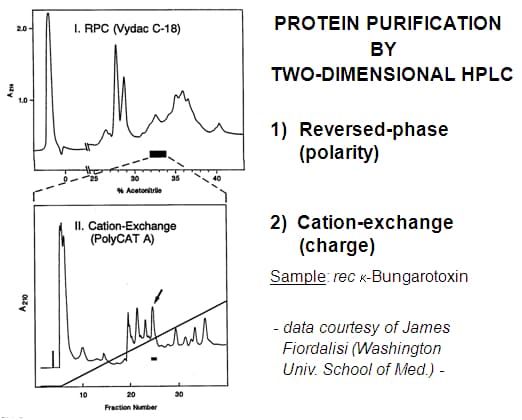Separation of Protein

Get In Touch
Proteins synthesized by the biotech industry for injectable pharmaceuticals are never 100% pure (the FDA requires purity of at least 98%). There may be side products from the synthesis or the protein may degrade in storage. At this time the most effective material for analyzing such mixtures is PolyCAT A™ with a particle size of 3µm and pore diameter of 1000-1500Å.
Order PolyCAT A™ now.
Degradation in storage : At high pH, the most common such reaction is deamidation of asparagine residues to yield a succinimide ring; this hydrolyzes to a racemic mixture of Asp- and isoAsp- residues. At neutral or acidic pH, the fastest reaction is dehydration of aspartic acid residues to yield the same succinimide intermediate and the same hydrolysis products (one of which is identical to the starting material). The effects on biological activity range from negligible to serious. In the past, degradation was assessed by protein digestion and peptide mapping. However, our columns, especially PolyCAT A™, can resolve many intact proteins differing by a single residue. The following figure shows the difference in the degradation pattern of recombinant human growth hormone (HGH) incubated at two different pH’s. The desPhe-Pro variant, a nonenzymatic cleavage product, is well separated from HGH, as are its corresponding variants. Such studiest are critical to determining which pH yields the most stable formulation.
Application Name : Protein Variant Analysis
Column Name : PolyCAT A™ Columns
Analytes : Protein
Get Your Quote or Call: 040-29881474
We focus on supporting laboratory workflows & optimizing lab-wide operations
